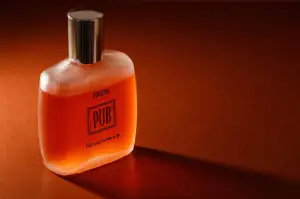Revive Your Rusty Cast Iron: A Step-by-Step Guide to Cleaning and Restoring

Cast iron cookware is known for its durability and ability to retain heat, making it a favorite among professional chefs and home cooks alike. However, over time, cast iron can develop rust, which not only affects its appearance but also its performance. Cleaning and restoring rusty cast iron is essential to ensure that it remains in top condition and continues to provide you with delicious meals. In this step-by-step guide, we will walk you through the process of reviving your rusty cast iron, so you can enjoy cooking with it for years to come.
Gather necessary materials for cleaning
To effectively clean and restore your rusty cast iron, you will need a few essential materials. Firstly, gather a stiff brush or steel wool to scrub away the rust. Additionally, you will need mild detergent or dish soap to remove any grease or grime. Next, prepare a mixture of vinegar and water in equal parts for soaking the cast iron. Lastly, have some paper towels or clean cloth ready for drying the cast iron after cleaning. With these materials on hand, you'll be well-equipped to tackle the task of reviving your rusty cast iron.
Preparing the cast iron for cleaning
Before you begin the process of cleaning your rusty cast iron, it is important to properly prepare it. Start by removing any loose rust or debris from the surface of the cast iron using a stiff brush or steel wool. Be sure to scrub gently to avoid damaging the cast iron. Next, rinse the cast iron under warm water to remove any remaining dirt or particles. Once rinsed, dry the cast iron thoroughly with a clean towel to prevent any further rusting. By preparing your cast iron properly, you are setting the stage for successful rust removal and restoration.
Removing rust from the cast iron
To remove rust from your cast iron, start by scrubbing the surface with a stiff brush or steel wool. Make sure to remove any loose rust particles. For stubborn rust spots, you can use a paste made of equal parts baking soda and water. Apply the paste to the affected areas and let it sit for about 15 minutes. Then, scrub the rusted spots again until the rust is completely removed. Rinse the cast iron thoroughly with warm water to remove any residue. Remember to be gentle while scrubbing to avoid damaging the surface of your cast iron.
Cleaning the cast iron with mild detergent
To clean the cast iron with mild detergent, start by filling a sink or basin with warm water. Add a small amount of mild dish soap to create a soapy solution. Gently scrub the cast iron using a soft brush or sponge, making sure to remove any remaining rust or residue. Pay extra attention to the corners and crevices. Rinse the cast iron thoroughly under running water to remove all traces of soap. Avoid using harsh abrasives or steel wool as they can damage the seasoning of the cast iron. Once cleaned, proceed to the next step of drying and seasoning the cast iron.
Drying and seasoning the cast iron
After cleaning the cast iron, it is crucial to dry it thoroughly to prevent any moisture from causing rust. Start by using a clean cloth or paper towel to remove any excess water. Then, place the cast iron on a stovetop burner set to low heat for a few minutes. This will help evaporate any remaining moisture.
Once the cast iron is completely dry, it's time to season it. Seasoning creates a protective layer on the surface of the cast iron and enhances its non-stick properties. To season, apply a thin coat of vegetable oil or shortening all over the cast iron, including the handle and exterior.
Next, preheat your oven to 350°F (175°C). Place the cast iron upside down on the middle rack of the oven with a baking sheet or aluminum foil on the bottom rack to catch any drips. Bake for about an hour, allowing the oil or shortening to polymerize and form a durable seasoning layer.
After an hour, turn off the oven and let the cast iron cool inside before removing it. Once cooled, wipe off any excess oil with a paper towel. Your cast iron is now seasoned and ready for use!
Remember that seasoning is an ongoing process. Each time you cook with your cast iron, you are adding another layer of seasoning. Over time, this builds up into a beautiful patina that enhances flavor and provides excellent cooking performance.
By properly drying and seasoning your cast iron after cleaning, you can ensure its longevity and maintain its non-stick properties. So go ahead and enjoy cooking with your clean and rust-free cast iron!
Proper storage and maintenance of cast iron
Proper storage and maintenance of cast iron is essential to keep it in good condition and prevent rust from forming again. After cleaning and seasoning your cast iron, make sure it is completely dry before storing it. Moisture can lead to rust, so store your cast iron in a cool, dry place.
To prevent scratching or chipping, avoid stacking other pots or pans on top of your cast iron. Instead, place a paper towel or cloth between each piece to protect the seasoning.
Regular maintenance is key to keeping your cast iron in top shape. After each use, clean your cast iron with hot water and a stiff brush. Avoid using soap as it can strip away the seasoning. Dry thoroughly and apply a thin layer of oil to prevent moisture from seeping in.
If you notice any signs of rust starting to develop, address it immediately by following the steps outlined in this guide. By taking proper care of your cast iron, you can enjoy its many benefits for years to come – delicious meals cooked to perfection!
Now that you have successfully cleaned and restored your rusty cast iron, it's time to reap the rewards of your hard work. With proper maintenance and care, your cast iron will continue to serve you for years to come.
Remember to always dry your cast iron thoroughly after each use to prevent any moisture from causing rust. Additionally, make sure to season your cast iron regularly to maintain its non-stick surface and enhance its flavor-enhancing properties.
By following these simple steps, you can enjoy cooking with a clean and rust-free cast iron pan or skillet. Embrace the magic of this versatile kitchen tool and unleash the full potential of flavors in every bite. Happy cooking!
Published: 29. 12. 2023
Category: Home



